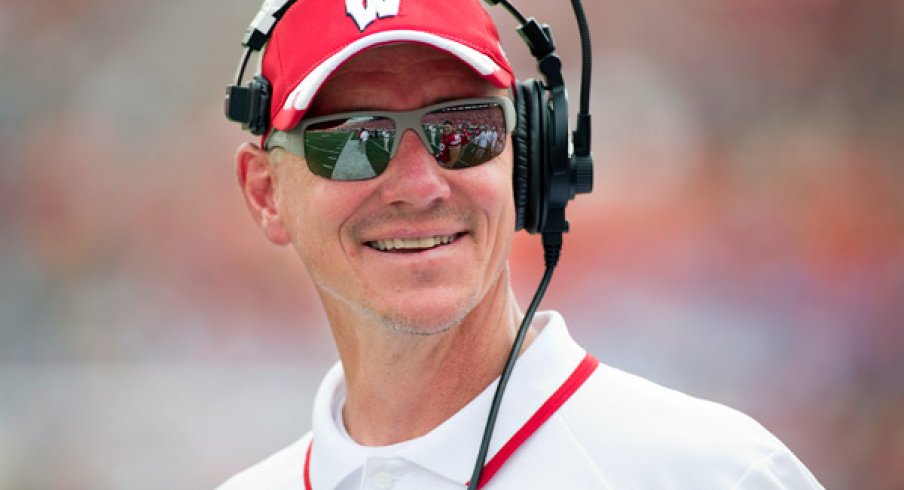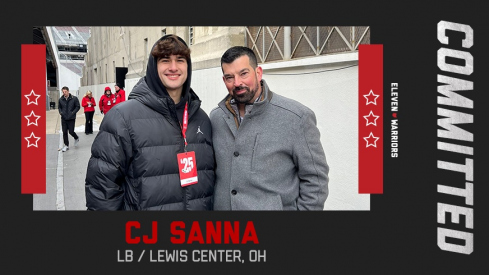During the BCS era, second-year coaches enjoyed unlikely success. Bob Stoops, Jim Tressel, Urban Meyer and Gene Chizik can all attest to that after winning national championships in Year 2. Wisconsin’s Gary Andersen would like to continue that tradition into the new four-team playoff.
That quartet of coaches was fortunate to head prestigious programs in need of a shakeup. With the talent already in place to compete at a high level, they built off of momentum created in their first seasons. The Badgers’ 9-4 campaign in 2013 would qualify under those terms.
The college football world was stunned when Bret Bielema left Wisconsin for Arkansas. Badger faithful were especially taken aback after Bielema had them to three straight Rose Bowls. In came Andersen, and thoughts immediately turned to the future.
At Wisconsin, the future is always the present, as in running backs. It just doesn’t matter when the Badgers lose a tailback. They’re hoping that’s true again this season, with Melvin Gordon taking over fulltime after splitting carries with James White. Even in a platoon system, Gordon’s amassed more than 3,000 yards in his career while averaging 8.1 yards per carry. He enters 2014 as a bona fide Heisman contender.
| Date | Opponent |
|---|---|
| 8/30 | LSU (Reliant Stadium, Houston) |
| 9/6 | Western Illinois |
| 9/20 | Bowling Green |
| 9/27 | South Florida |
| 10/4 | @ Northwestern |
| 10/11 | Illinois |
| 10/25 | Maryland |
| 11/1 | @ Rutgers |
| 11/8 | @ Purdue |
| 11/15 | Nebraska |
| 11/22 | @ Iowa |
| 11/29 | Minnesota |
“I’m never content with where I am,” Gordon said this spring. “People say ‘I’m good at this’ and ‘I’m good at that,’ I really don’t pay attention to any of that. I look at it as I can be better at everything, so I just want to focus on every aspect of my game, whether it’s catching, blocking, being sharper on my cuts – every little thing. I just want to focus on every aspect of my game.”
The typical Wisconsin running game will be needed since it only returns eight starters and lost 26 seniors from last year’s team. One of those is wide receiver Jared Abbrederis, the Badgers’ biggest playmaker not in the backfield. Tight end Jacob Pederson is also missing. The defense is even more raw, losing eight starters and a majority of the front seven.
“We are going to be young in spots,” Andersen said. “Young kids have to play if we’re going to be a good football team.”
Chris Borland, Pat Muldoon and Beau Allen headline the group that’s gone. In all, eight rotation players are missing from the defensive line and linebacking corps. The offensive line – always a valuable cog in Wisconsin’s run game – is much better off. It returns four of five starters. But Andersen isn’t interested in being a Gordon only offense.
During the spring, the Badgers began mixing in elements of the spread offense into the unit. It should help quarterback Joel Stave – or Tanner McEvoy – in life without his two top pass-catching threats and mix Kenzel Doe, Jordan Fredrick, Alex Erickson and Robert Wheelwright into the offense after being largely irrelevant. Next in line at tight end are Rob Havenstein and Sam Arneson.
“I think [the receivers] have all done a really good job,” Stave said during spring practice. “Kenzel is someone who has already played quite a bit, so it’s no surprise to see him doing a pretty good job.”
There were issues late last season when defenses keyed on Wisconsin’s run game. In the second half of the season, Stave’s stats fell off considerably, tossing nine touchdowns and seven interceptions. For the season, he completed 62 percent of his passes for 2,494 yards with 22 touchdowns and 13 interceptions.
“The best players are going to play,” Andersen said. “We don’t hide from that as coaches. We don’t hide from that as a group of players. We all want to win games at the end of the day, so we’ll all work hard and may the best guy get himself on the field.”
That could mean McEvoy supplanting Stave. With Stave missing the spring game with a lingering shoulder injury, McEvoy impressed onlookers, even with ordinary stats.
“He carries himself like a quarterback,” Andersen said. “I think when he walked in here before, he carried himself like a quarterback that was absorbing a very difficult offense and new terminology. So much of the run checks that he has to handle and the demeanor that he carried himself with last August and the way he carries himself today is really completely different.”
What Andersen hopes is no different is the trend of second-year coaches reaching college football’s pinnacle.


